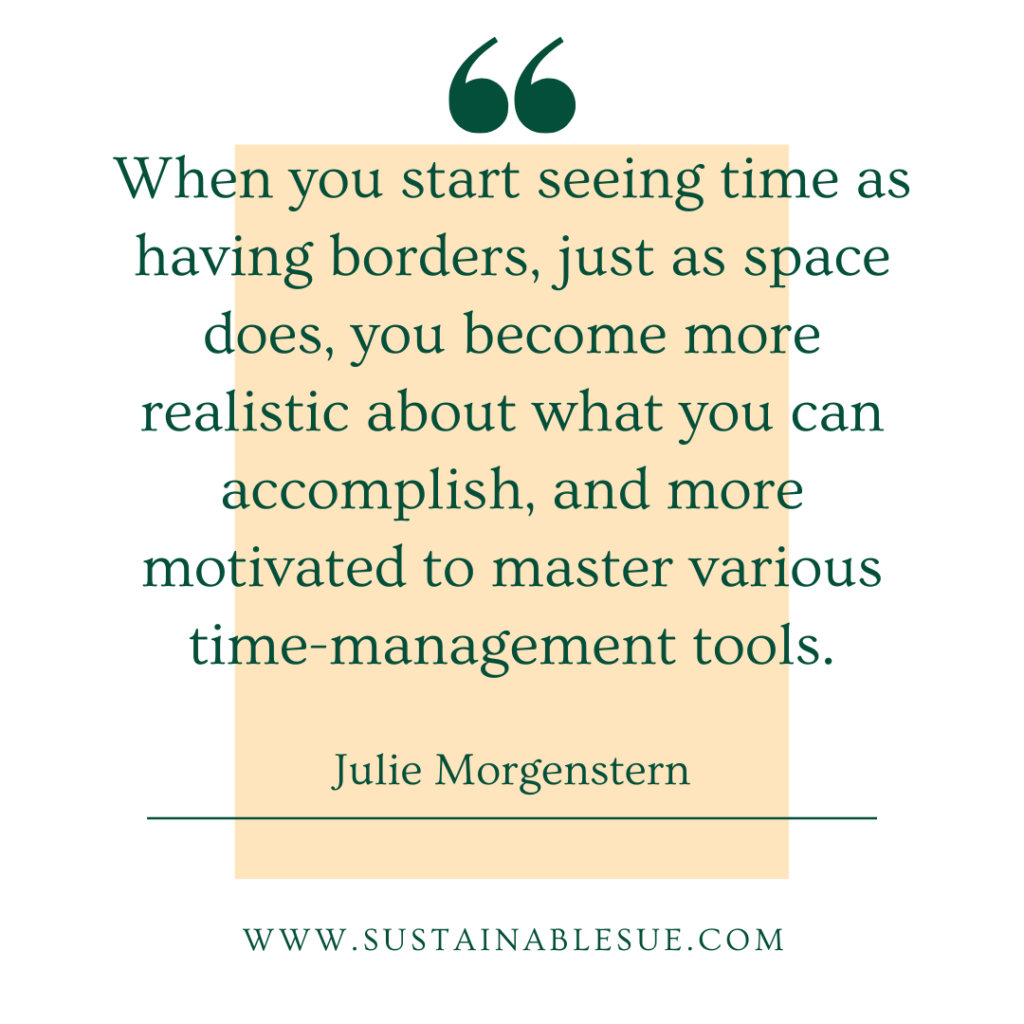Forget about getting more done, I want you to get the right things done. The topic I get the most questions about is time management. I want to share the principles behind time block planning that help me to be productive in a sustainable way.
Time block planning is certainly not something that I invented. On Laura Vanderkam’s June 4th episode of her “Before Breakfast” podcast, she talks about the value of time blocking. Cal Newport has a whole website and planner dedicated to time block planning.
Do not be afraid that this is going to be all about doing more with your day. Time block planning will allow you to make sure the RIGHT THINGS get done in a day. That is why it is a time management tool to get the right things done, not to get MORE done.
The Pain Point
Tell me if this scenario resonates with you:
You have ABC thing to do but you know you will need a good 40 minute chunk of time to do it. This might be sort out a billing error, write an email outlining results or a problem you have to look up dates to references, or finding something from your storage unit because you know it is probably in a box at the back.
So you wait to have time. You do stuff in the meantime, pretending to be productive, but you don’t get the right things done.
- Putting off the billing error makes you miss out on a refund.
- Not sending the email means your voice is not counted.
- Avoiding the storage unit leads to the special Tooth Fairy pillow never being used.
Time does not appear. You do not make time. Time is waiting for you to assign it a job. Imagine time as an empty bin waiting to hold your thoughts and actions for you until you assign a time to tackle it.

As you probably know by now, when you are applying the Sustainable Productivity methods to your habits, once you identify the pain point, it is time to move to the adjustments. First I will give you a few examples of what to time block. This might give you some ideas of how you can make this work in your world. Then I will show you a few options of how to time block. so you can get the right things done.
Adjustment, Part 1
What to time block differs on the role. I use time block planning for two different types of tasks that I encounter in my personal and professional life.
Professional life – Tasks that need to be repeated
The tasks that I encounter in my professional life tend to be those that need to be repeated.
Some tasks happen on regular intervals because of time constraints.
- Every week I prepare 6 slide decks for the following week.
- Daily I prepare and send the agendas for the following day’s meetings.
- For every project I need to prepare a monthly report to the steering committee.
Not all of the tasks are time bound. There are also tasks that are so large that I cannot tackle them to one sitting. For example I currently have a to do I call “Fix the billing SNAFU.” This comedy of errors dates back to the person who was in my role before me so it is taking a long time to untangle and set up a process from devolving again.
Personal life – Tasks that can be grouped
The to do list in my personal life appears very different. The items below are actually on my Brain Dump List on my phone. It seems like they separate out into three buckets.
- Errands – These are tasks I need to address outside the house. Grocery pick up, library books pick up / drop off, buy ant spray, and Target.
- Chores – These are tasks I can do / need to do at home. Pay bills, empty bathroom trash cans, rollover my retirement form former employment, and clean out the fish bowl.
- Non-work – These are things I considered not productive in another life. Today I know rest, fun, hobbies and relaxation are critical to living a Sustainably Productive life. Items in this bucket include: plant potatoes, buy sewing needle to use on denim, look up the address of the murals I want to photograph, and call about an activity for my nieces to do this summer when they visit.
These types of things I time block differently, which we will cover in the next section, Adjustment, Part 2.
Adjustment, Part 2
How I set my time blocks to get the right things done differs depending on whether it is for my professional life or my personal life.
Professional life – Tasks that need to be repeated
Let’s return to the example I introduced you to in part 1. I blocked an hour each week dedicated to Project SNAFU. If I wait until I have time to tackle it, that will never come. I won’t solve it in an hour, but I can make progress each week by following up and asking questions related to it.
Similarly, I have a 45 minute block daily on my calendar to prep for tomorrow’s meetings and send agendas. Same for a block to draft Power Point slides each week and Steering Committee status each month.
If you wait until you have time to tackle a large project, it will never happen.
Personal life – Tasks that can be grouped
In my personal life I find that the list often overruns the time I have available. I may only have an hour to run errands during my lunch hour so I need to prioritize – what really need to get done today and what could be put off. Then I plan for driving time. We often overlook driving time – we race around and cannot figure out why we ended up late to our afternoon appointments. Until we can figure out how to apparate like in Harry Potter, factor in that travel time.
On my calendar I will block an hour (or 30 minutes – whatever the day allows) for chores and non-work as well. This gives me flexibility to prioritize (or cherry pick fun) chores I want to do in that time allotment. Your task grow to fill the time you give it so learn from Julie Morgensten about giving your time borders to contain it.
One more thing about that non-work time. I know many of you are out there saying you will do The Fun Thing after the work is done. Then another day rolls by and you are (rightfully so) exhausted at the end of the day and just collapse in front of Netflix. Building The Fun Thing into your day with a time block gives you a better chance that it will indeed happen.
Bonus
Later this week I will be posting video of how I use time blocking planning as part of a larger project plan. For my day job, I have a 500+ line project plan for a 6 month, multimillion dollar project. I will show you how I apply time block planning to that project plan to get the work done (i.e. is productive) in a way that is methodical and repeatable (i.e. sustainable).

Leave A Comment